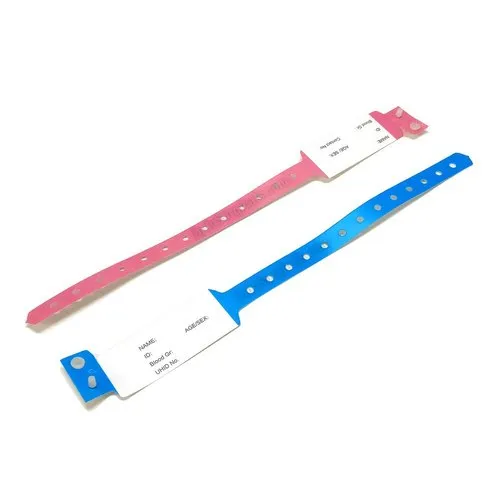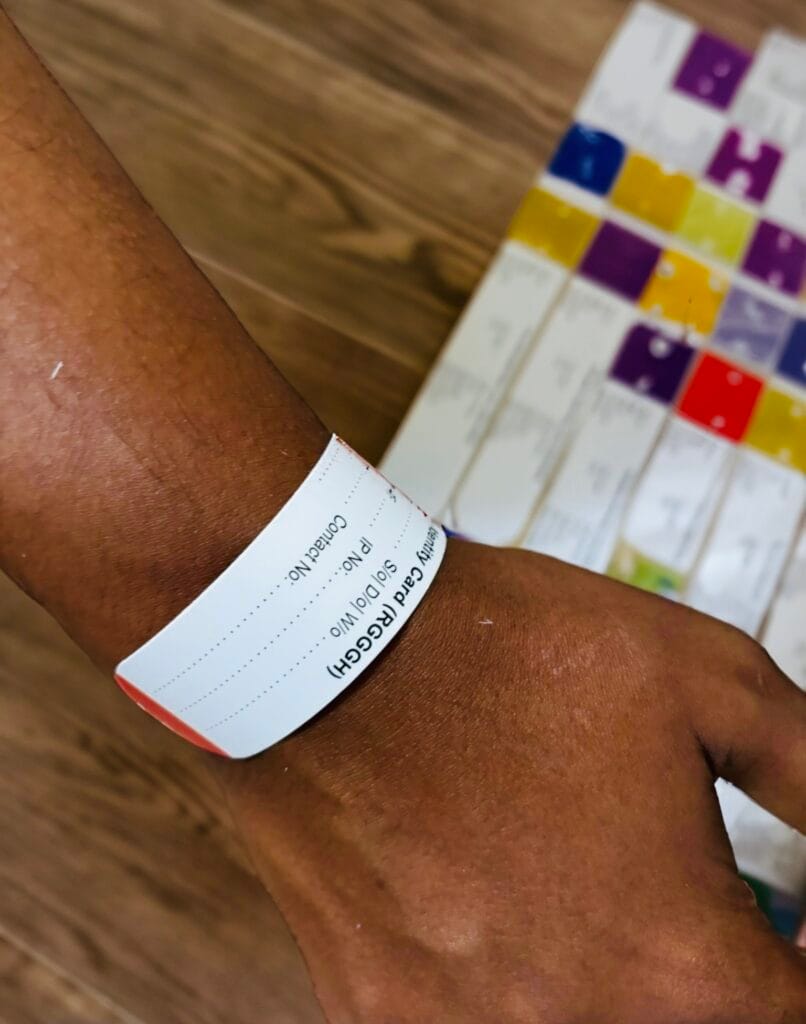How Patient Identification Band Boosts Patient Safety in Clinical Settings
Wiki Article
Enhancing Security: The Significance of Person Identification Bands in Health Care
In the realm of healthcare, the efficiency of patient recognition bands can not be overstated, as they serve as a basic protect against misidentification and succeeding mistakes. These bands, often overlooked, contain essential information that is important for making certain person safety and optimum treatment end results. However, the application of reliable identification methods positions a number of difficulties that health care companies should navigate. As we discover the complex role of these bands, it ends up being obvious that their relevance expands beyond simple identification, increasing concerns about finest methods and future advancements in individual security.Review of Individual Recognition Bands
Individual identification bands play a crucial function in ensuring the security and precision of client care in health care setups. These bands, normally endured the wrist or ankle joint, act as an important tool for verifying individual identification, thus minimizing the threat of mistakes in therapy, drug administration, and other health care procedures. Made from long lasting materials, person recognition bands often consist of crucial information such as the person's name, date of birth, clinical document number, and barcodes or QR codes for scanning.The application of client recognition bands is crucial in various health care atmospheres, consisting of healthcare facilities, outpatient facilities, and long-lasting care establishments. They add to a methodical approach in client administration, allowing health care professionals to rapidly and properly recognize people, specifically in high-pressure scenarios where swift decision-making is important.
Moreover, the use of these bands is straightened with governing criteria intended at enhancing patient security - Patient Identification Band. By ensuring that each person's info is readily accessible and quickly proven, doctor can keep a high standard of treatment, reduce the incidence of damaging events, and foster a culture of safety within health care establishments
Benefits of Accurate Identification
Precise identification is basic to improving individual safety and care high quality in medical care settings. It acts as the initial line of protection versus errors that might result in damaging patient end results. By making certain that each patient is correctly determined via trusted ways, such as client identification bands, doctor can significantly minimize the threat of misidentification, which can result in unacceptable treatments, drug errors, and even surgical mix-ups.Furthermore, accurate person recognition promotes efficient interaction amongst healthcare groups. When all employee can constantly recognize clients, they can share crucial information more successfully, resulting in better coordination of care. This is specifically important in emergency situation situations where timely interventions are critical.
In addition, precise recognition sustains conformity with regulatory requirements, consequently minimizing the threat of legal consequences for medical care facilities. It cultivates trust fund in between people and doctor, as patients feel much more protected knowing that their identifications are being secured.

Common Challenges Encountered
Making certain efficient client recognition in medical care settings provides a variety of challenges that can compromise safety and security and care high quality. Individuals may arrive in a state of confusion or distress, making exact identification tough.Another challenge is the reliance on human aspects in identification procedures. Health care professionals might inadvertently forget or misunderstand recognition methods, especially in high-stress settings such as emergency situation departments. This can cause mistakes, including the management of wrong therapies or medications.
Technical issues additionally position challenges. Electronic health document (EHR) systems are created to enhance individual recognition, system interruptions or individual mistakes can interfere with the process. Moreover, the physical style of person ID bands can result in readability problems, specifically in cases where bands are harmed or obscured.
Last but not least, inconsistent training among team relating to recognition methods can cause voids in understanding and technique. Attending to these obstacles is important for improving person safety and security and guaranteeing that recognition bands serve their intended function properly.
Finest Practices for Implementation
To effectively implement person recognition bands in healthcare settings, organizations must take on a multifaceted approach that focuses on innovation, training, and standardization integration. Standardization entails establishing clear methods for the style, application, and usage of identification bands across all departments. This makes sure consistency and lessens the danger of This Site errors linked to differences in band kinds or labeling methods.

Training is essential for all medical care personnel to ensure they comprehend the significance of exact person identification, exactly how to correctly apply and review recognition bands, and the procedures to follow in situation of inconsistencies. Normal workshops and correspondence course can enhance this knowledge and promote a society of security.
Innovation assimilation plays an essential duty in enhancing the effectiveness of client recognition bands. Utilizing barcode scanning or RFID innovation can streamline the recognition procedure, enabling real-time verification of individual identities. Furthermore, electronic wellness record systems need to be set up to consist of alerts for mismatches in between the identification band and individual information.
Future Trends in Client Safety
As healthcare continues to progress, the focus on person safety is likely to escalate, driven by innovations in modern technology and a higher understanding of systemic threats. Arising patterns suggest a change in the direction of even more incorporated systems that utilize information analytics, expert system, and artificial intelligence to enhance patient recognition processes. These innovations can help determine potential safety and security concerns before they rise, thus minimizing mistakes related to misidentification.Moreover, the execution of blockchain innovation might transform how patient information is safely shared among health care service providers, ensuring that recognition bands are consistently precise and updated. This will certainly not just boost individual safety yet additionally facilitate smooth interaction throughout multidisciplinary groups.

In enhancement, the helpful site growing concentrate on individualized medication is anticipated to affect person safety and security methods. By incorporating group and hereditary information into identification systems, health care specialists can customize therapies better, minimizing the risks of unfavorable responses as a result of misidentification.
Conclusion
In verdict, patient recognition bands function as a crucial element in improving security within health care environments. By additional resources facilitating accurate person identification, these bands considerably reduce the risk of errors linked with misidentification, improper treatments, and medication administration. Despite difficulties in implementation, adherence to finest methods and the combination of emerging innovations can better boost their effectiveness. Ultimately, the ongoing emphasis on robust identification procedures will add to better person end results and overall safety and security in health care setups.In the world of health care, the efficacy of person identification bands can not be overemphasized, as they offer as an essential safeguard against misidentification and succeeding errors.Person recognition bands play an important function in ensuring the safety and precision of person care in healthcare settings. Made from durable products, patient recognition bands often include crucial info such as the person's name, date of birth, medical record number, and barcodes or QR codes for scanning.
By making sure that each client is correctly recognized with reliable methods, such as person recognition bands, healthcare providers can substantially lessen the risk of misidentification, which can lead to unsuitable therapies, medicine errors, and even surgical mix-ups.
In conclusion, patient recognition bands offer as an essential element in improving security within health care settings. Patient Identification Band.
Report this wiki page